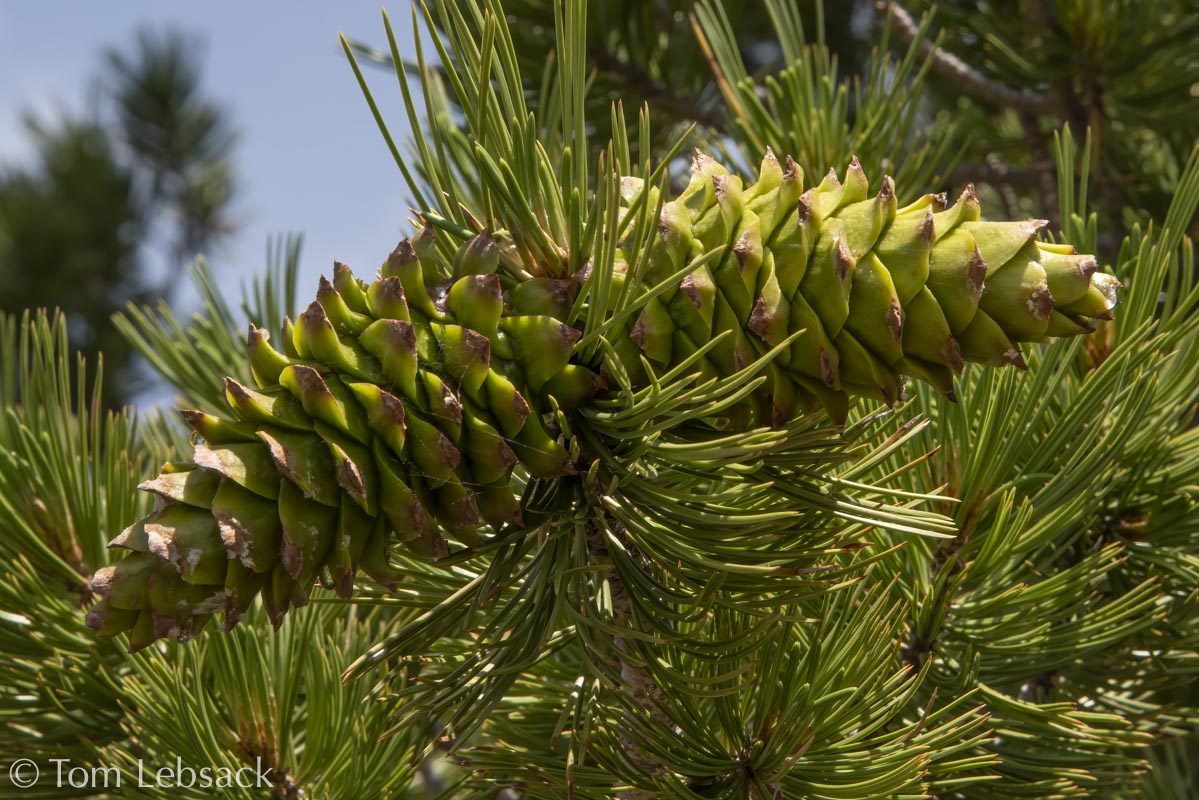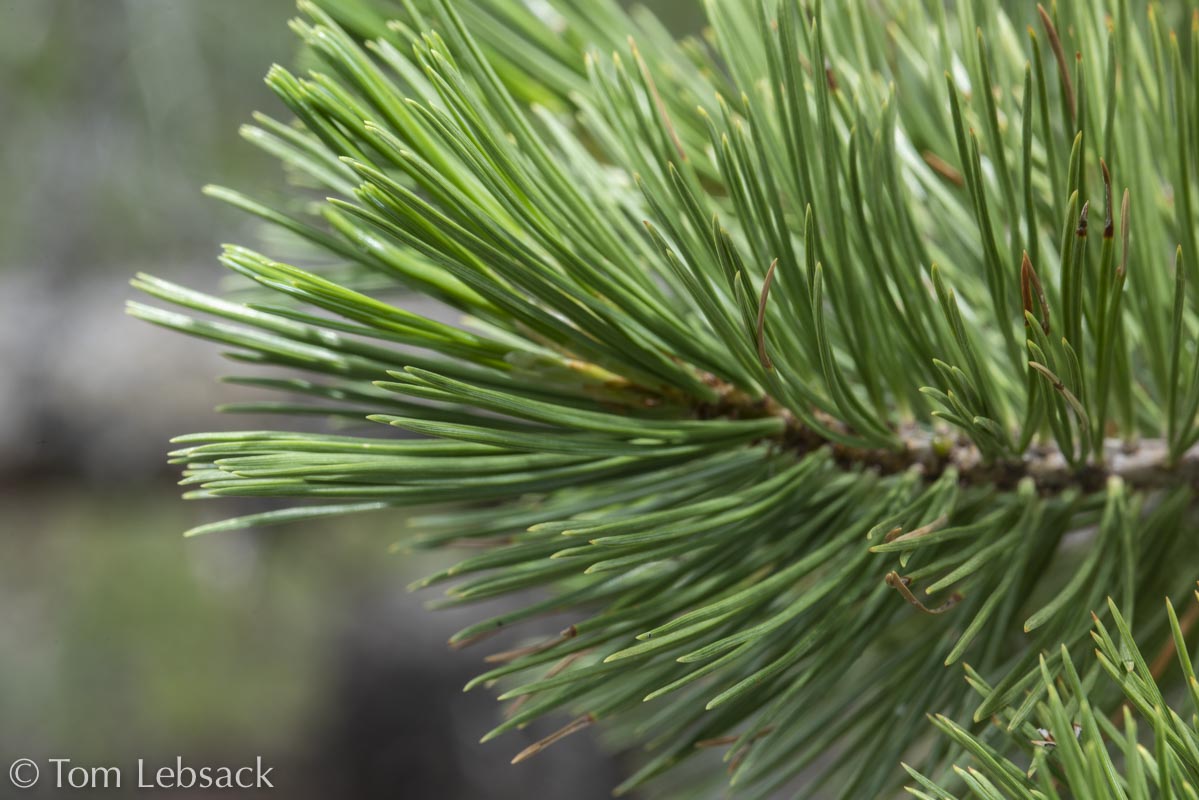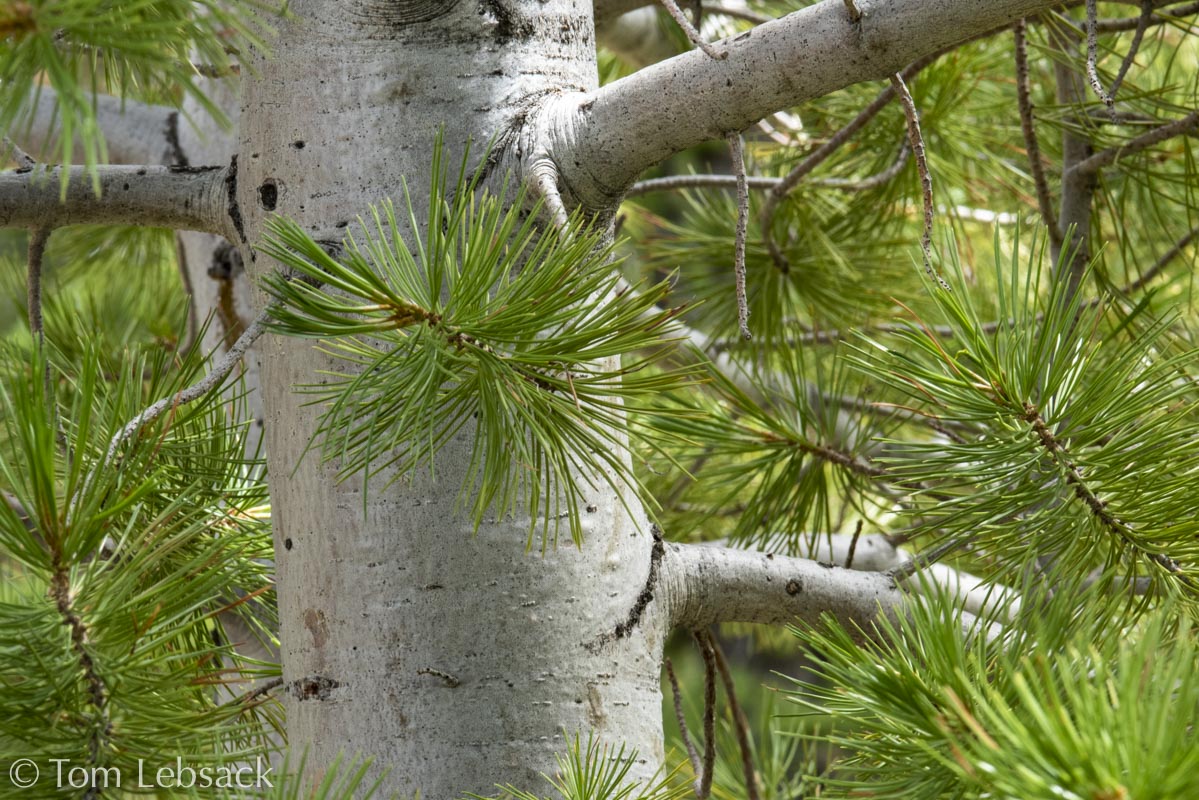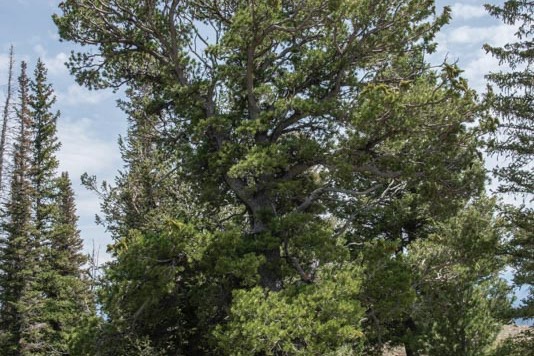Pinus flexilis
(Limber Pine)
| Scientific Name | Pinus flexilis | USDA PLANTS Symbol | PIFL2 |
| Common Name | Limber Pine | ITIS Taxonomic Serial No. | 183343 |
| Family | Pinaceae (Pine) | SEINet Reference |
Click Here |
| Description |
Life zones and habitat: Foothills to alpine (5200 to 12000 ft.); steep, rocky, well-drained sites with poor soils on exposed ridges and summits; found in mixed montane forests and near timberline and lower elevations. Plant: Evergreen, conifer tree growing to 40 to 50 feet; straight to contorted trunk 24 to 36 inches in diameter; cone-shaped crown becoming rounded with age; at or above timberline reduced to shrub form (krummholz) by wind shear; smooth bark on younger trees, light gray to silvery white, becoming furrowed with broad scaly plates, dark brown to grayish on mature trees. A slow growing, long-lived species, sometimes taking several hundred years to reach maturity; mature trees may exceed 1000 years of age. Needles: Five long needles per fascicle, 1.2 to 2.8 inches long, dark green; upper surfaces with conspicuous, lengthwise whitish bands, less pronounced on lower surfaces. Cones: Male and female cones on same tree; male cones ellipsoid-cylindric, ~0.6 inch long, pale red or yellow; female cones 2.8 to 6 inches long, green and oblong when immature, yellow-brown and ovoid to somewhat cylindric when mature. References: "Flora of Colorado" by Jennifer Ackerfield, American Conifer Society, Fire Effects Information System, SEINet. |
BONAP Distribution Map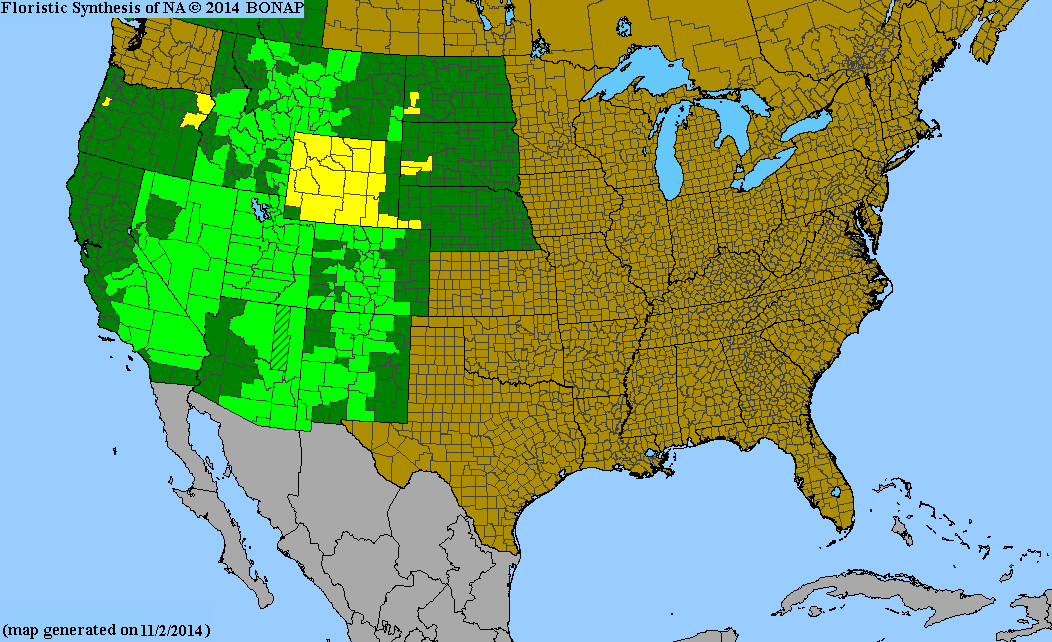
Map Color Key |
Colorado Status: Native |
© Tom Lebsack 2025
Banner photo: Castilleja rhexifolia and a brewing storm over the San Juan Mountains
I try to provide accurate, up-to-date, and relevant information, but cannot guarantee the completeness or accuracy of any information presented on this website. I use authoritative references to insure high standards of accuracy and review and update the information frequently.
